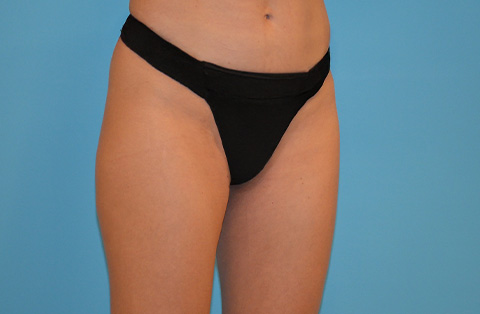Are you struggling with excess skin after significant weight loss or pregnancy? Panniculectomy surgery might be the solution you’ve been searching for. This procedure removes the overhanging skin, known as a pannus, from the lower abdomen. It can improve both your appearance and quality of life by relieving discomfort and hygiene issues caused by the extra skin.
If you’re curious about the surgery, its benefits, or what to expect during recovery, this article will walk you through everything you need to know. Discover how panniculectomy can help you regain confidence and comfort in your body.
What is Panniculectomy Surgery?
A panniculectomy surgery is a medical procedure designed to remove excess skin and fat, called a pannus, from the lower abdomen. This excess skin typically forms after significant weight loss or pregnancy, hanging down over the groin and thighs. Unlike a tummy tuck, which focuses on tightening abdominal muscles and reshaping the area, a panniculectomy strictly removes the sagging tissue to improve comfort and appearance.
The surgery can alleviate issues like skin irritation, infections, and mobility difficulties. It's often performed for medical reasons, especially when the excess skin causes functional problems.
What is the purpose of panniculectomy surgery?
The purpose of panniculectomy surgery is to remove excess skin and fat from the lower abdomen, typically after significant weight loss, pregnancy, or certain surgeries. This excess tissue, known as a pannus, can cause discomfort, skin irritation, rashes, and difficulty with hygiene.
The procedure aims to improve physical comfort, reduce the risk of infections in skin folds, and enhance mobility. While the surgery can also improve the appearance of the abdomen, its primary focus is on addressing medical and functional issues rather than aesthetic concerns.
Who is a Good Candidate for Panniculectomy?
A good candidate for panniculectomy surgery is someone who has excess skin and fat in the lower abdomen, usually after significant weight loss or pregnancy. Ideal candidates include:
Individuals experiencing discomfort, skin irritation, or infections due to the overhanging skin.
Those whose weight has been stable for at least six months and who are at or near their target weight.
Non-smokers, or those willing to quit before surgery, to promote better healing.
People in good overall health without conditions that would impair healing.
Candidates should also have realistic expectations about the results, understanding that panniculectomy focuses on functional improvements rather than purely cosmetic outcomes.
How does panniculectomy procedure is performed?
A panniculectomy procedure is performed under general anesthesia. The surgery typically follows these steps:
Incision: The plastic surgeon makes a horizontal incision across the lower abdomen, just above the pubic area. The length of the incision depends on the amount of excess skin being removed.
Tissue Removal: Excess skin and fat (the pannus) are carefully removed. The surgeon may extend the incision if necessary to remove larger amounts of tissue.
Closure: Once the excess tissue is removed, the remaining skin is pulled down, and the incisions are closed with sutures. Drains may be placed to prevent fluid buildup.
The surgery typically lasts 2 to 5 hours, depending on the complexity. Recovery begins immediately after, with most patients returning home the same day.
Panniculectomy vs tummy tuck
A panniculectomy and a tummy tuck (abdominoplasty) are both surgeries designed to address excess skin and fat in the abdominal area, but they have different goals and techniques.
Panniculectomy vs. Tummy Tuck: Key Differences
Purpose: A panniculectomy primarily removes the overhanging skin and fat (pannus) for medical reasons, such as improving comfort, hygiene, and mobility. It doesn’t focus on reshaping the abdomen. A tummy tuck, on the other hand, focuses on both removing excess skin and tightening abdominal muscles to create a more toned, contoured appearance.
Muscle Tightening: In a tummy tuck, the plastic surgeon tightens the abdominal muscles, which often become stretched after pregnancy or weight gain. A panniculectomy does not involve muscle tightening, as its focus is more on functional improvement.
Aesthetic vs. Medical Focus: A panniculectomy is often performed for medical reasons, such as alleviating skin irritation or improving mobility, whereas a tummy tuck is typically considered a cosmetic procedure aimed at improving the appearance of the abdomen.
Comparison Chart: Panniculectomy vs. Tummy Tuck
Feature | Panniculectomy | Tummy Tuck (Abdominoplasty) |
Purpose | Removes excess skin and fat (pannus) for medical relief | Removes skin and fat, and tightens muscles for a flatter, contoured appearance |
Muscle Tightening | No | Yes |
Primary Focus | Functional improvement (comfort, hygiene, mobility) | Aesthetic improvement (appearance of the abdomen) |
Incision | Horizontal, across the lower abdomen | Similar horizontal incision, but may be more extensive for full muscle repair |
Candidates | Those with excess skin after weight loss or pregnancy causing discomfort | Those seeking a more toned, contoured abdomen |
Insurance Coverage | May be covered if medically necessary | Generally not covered, considered elective |
Recovery Time | 4 to 6 weeks | 6 to 8 weeks |
Results | Removes excess skin, improves mobility | Tighter, more defined abdominal area |
Scarring | Moderate to significant, depending on extent | Similar, but scars may be placed lower for cosmetic reasons |
Both surgeries have benefits, but the choice between them depends on your medical needs and aesthetic goals. For individuals focused on comfort and health, a panniculectomy may be ideal. For those seeking a slimmer, more contoured abdomen, a tummy tuck may be a better option.
How much does panniculectomy surgery typically cost?
The cost of panniculectomy surgery typically ranges from $8,000 to $15,000. The total cost can vary depending on several factors, including:
Surgeon’s expertise: Highly experienced plastic surgeons may charge more for their services.
Geographical location: Costs can be higher in large cities or areas with a higher cost of living.
Hospital or surgical facility fees: The cost of the facility where the procedure is performed can add to the total.
Anesthesia fees: The type of anesthesia used and the anesthesiologist’s fees can also affect the overall price.
Post-surgery care: Medications, follow-up appointments, and any complications could influence the final cost.
Insurance Coverage: Panniculectomy may be covered by insurance if it is deemed medically necessary to alleviate discomfort, skin infections, or mobility issues. You’ll need to check with your insurance provider to see if they cover the procedure and if you meet their criteria for medical necessity.
Cosmetic Surgeries in Turkey are So Affordable
Plastic surgeries in Turkey are significantly more affordable compared to many other countries, with costs often 50-70% lower. This price difference is primarily due to lower operational costs, including wages, facility expenses, and the overall cost of living, rather than a compromise on quality.
Why Turkey is an affordable option for cosmetic surgeries?
Turkey is an affordable option for cosmetic surgeries due to several key factors:
Lower Operating Costs: The cost of living, wages, and overhead expenses, such as medical equipment and facility maintenance, are lower in Turkey compared to countries like the U.S. or Western Europe. This allows clinics to offer high-quality services at more competitive prices.
Government Support: The Turkish government actively promotes medical tourism, offering incentives and regulations that help keep costs low while maintaining high standards of care. The government also supports private clinics in marketing their services abroad.
Currency Exchange Rates: The favorable exchange rate for foreign currencies like the U.S. dollar or Euro makes procedures in Turkey much more affordable for international patients.
Highly Qualified Surgeons: Turkey has many internationally trained and board-certified cosmetic surgeons who offer services at lower rates than their counterparts in Western countries. Despite the lower prices, many surgeons maintain high levels of expertise.
State-of-the-Art Facilities: Turkey's medical tourism industry is competitive, leading clinics to invest in advanced technology and modern facilities while keeping prices lower than similar services in more expensive regions.
These factors make Turkey a popular destination for individuals seeking affordable yet high-quality cosmetic procedures.
What is the Recovery Process After Panniculectomy?
The recovery process after a panniculectomy typically takes several weeks and involves the following steps:
Immediate Post-Surgery (First Few Days)
Hospital Stay: Some patients may need to stay in the hospital for 1-2 days, depending on the extent of the surgery.
Pain Management: Pain and discomfort are common, and doctors prescribe pain medication to manage it.
Drains: Small tubes may be placed under the skin to drain excess fluid. These are usually removed after a few days to a week.
First 2 Weeks
Rest and Mobility: Patients are encouraged to rest but also start walking short distances to prevent blood clots. Avoid strenuous activities.
Wound Care: Patients must keep the incision area clean and dry. Dressings are usually changed regularly as per the surgeon’s instructions.
Swelling and Bruising: Swelling and bruising in the abdominal area are normal and will gradually decrease.
Weeks 3-6
Follow-Up Visits: Regular follow-ups with the surgeon to monitor healing and remove stitches if needed.
Resuming Activities: Light activities can be resumed, but heavy lifting, exercise, and strenuous movements should be avoided.
Wearing Compression Garment: Patients are often advised to wear a compression garment to reduce swelling and support healing.
Full Recovery (6 Weeks and Beyond)
Returning to Normal Life: Most patients can return to work and normal activities within 4 to 6 weeks, depending on the nature of their job.
Scarring: Scars will gradually fade but remain visible. Following the surgeon’s scar care advice can help minimize their appearance.
Complete recovery may take several months, during which the final results of the surgery will become more noticeable. Following post-surgical instructions carefully is key to a smooth recovery.
Risks and complications
Like any surgery, panniculectomy carries some risks and potential complications. However, when performed by a qualified surgeon, and with proper post-operative care, these risks can be minimized. Maintaining good overall health, following pre- and post-surgery instructions, and choosing an experienced surgeon can significantly reduce the chances of complications. Understanding the potential risks helps patients make informed decisions about the procedure.
Potential Complications
Infection: Surgical wounds can become infected if not properly cared for, requiring antibiotics or further treatment.
Bleeding: Excessive bleeding can occur during or after the surgery, though this is uncommon.
Blood Clots: Deep vein thrombosis (DVT) or pulmonary embolism (PE) can develop, particularly if the patient remains immobile for too long.
Poor Wound Healing: Some patients may experience delayed healing, which can lead to larger scars or skin necrosis.
Seroma: Fluid accumulation under the skin, known as a seroma, may occur and sometimes requires draining.
Scarring: All surgeries leave scars, but in some cases, scarring may be more prominent or raised.
Numbness: Temporary or permanent numbness in the abdominal area is possible due to nerve damage.
Anesthesia Risks: As with any surgery, there are risks associated with anesthesia, such as allergic reactions or respiratory issues.
Proper aftercare and close communication with the surgical team can help address these issues early and prevent more serious complications.






